This vegetable lo mein is fresh noodles tossed with an assortment of colorful vegetables in a savory sauce. A remake of the take out classic that takes like it came straight from a restaurant!
I often make my family’s favorite restaurant dishes at home including zesty Thai basil chicken, hearty almond chicken stir fry, sweet and sour pork and this delicious and easy veggie lo mein.
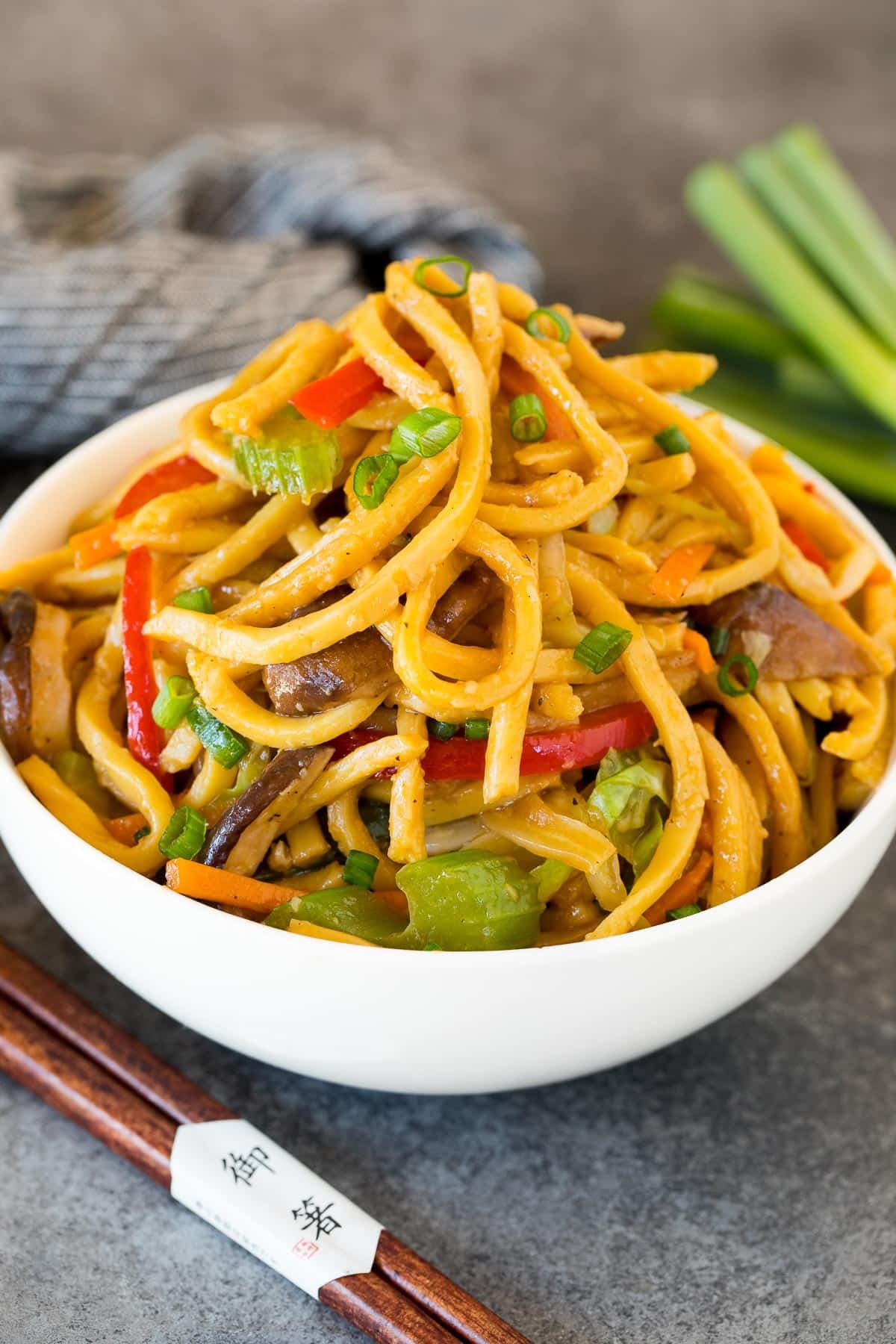
When I order take out, I always get an order of vegetable lo mein. I love those long noodles mixed with plenty of veggies! I’ve since learned how to make this dish at home, and it actually happens to be quite simple to put together.
Table of Contents
Vegetable Lo Mein Ingredients
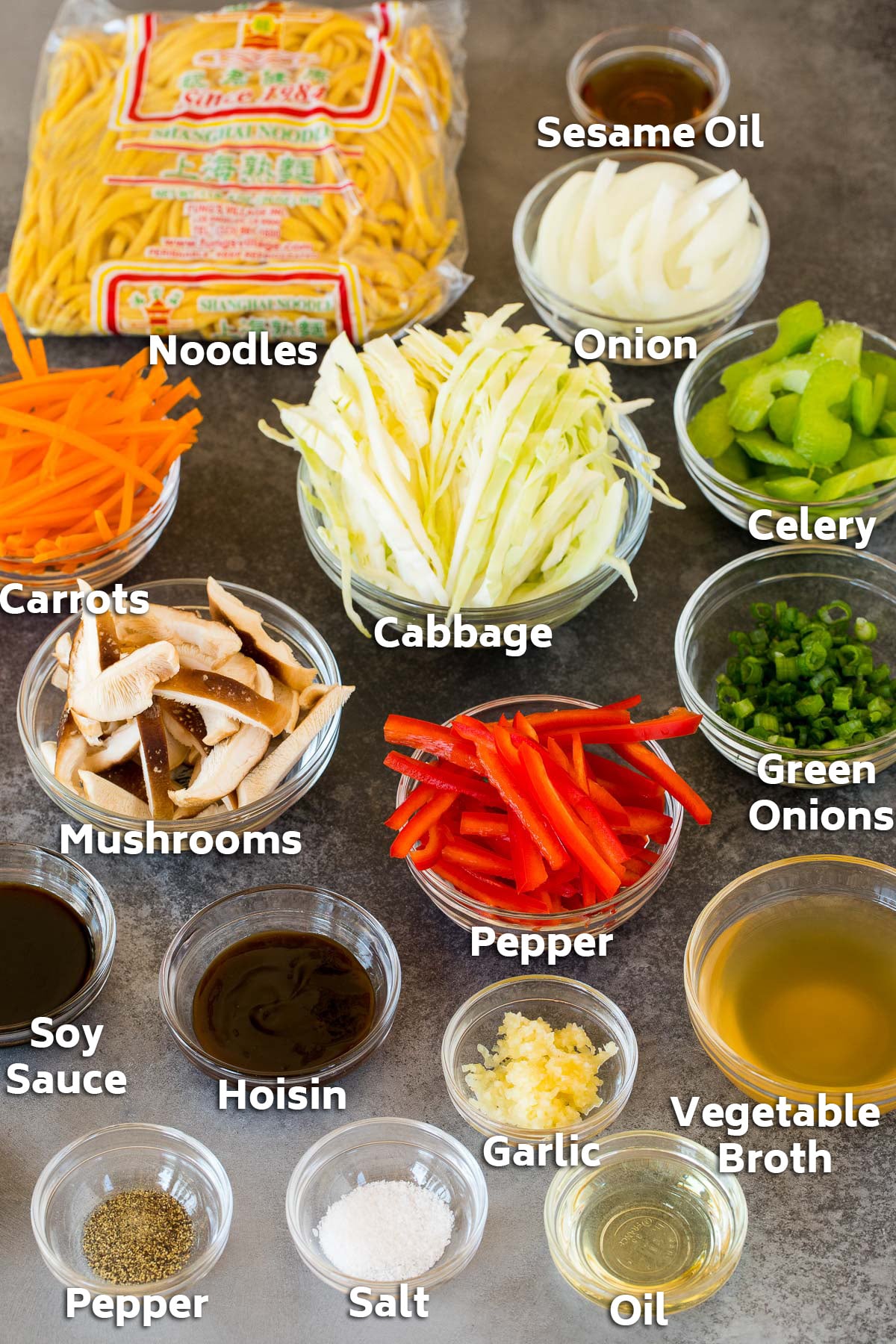
This recipe contains an assortment of ingredients, many of which can be found at your local grocery store.
- Vegetables: Typical veggies in lo mein include carrots, onions, celery and cabbage. I add more vegetables to increase the flavor and add a boost of color. Some of my favorite additions include red bell peppers, mushrooms, bok choy, zucchini or green beans.
- Noodles: I find that fresh noodles work best, such as Asian style egg noodles. Many grocery stores sell Asian noodles in the refrigerated area of the produce section, or you can purchase them at an Asian market. The noodles I buy are labeled as Shanghai noodles. If you can’t find fresh noodles, dry noodles will also work well. Check your grocery store’s international foods aisle for dry noodle options.
- Sauce: The sauce for this dish is a blend of vegetable broth, hoisin sauce, soy sauce and sesame oil. I add a bit of corn starch so that the sauce clings to the noodles.
How Do You Make Vegetable Lo Mein?
First, place onions, carrots, celery, mushrooms, peppers and cabbage in a pan or wok. Cook the veggies until they’re tender, then stir in some fresh garlic. Add your cooked noodles to the pan, then make the sauce. In a separate bowl, whisk together vegetable broth, hoisin sauce, soy sauce, sesame oil and the corn starch. Pour the sauce in the pan and bring the sauce to a simmer until it has just thickened. Garnish the dish with green onions, then serve immediately and enjoy!
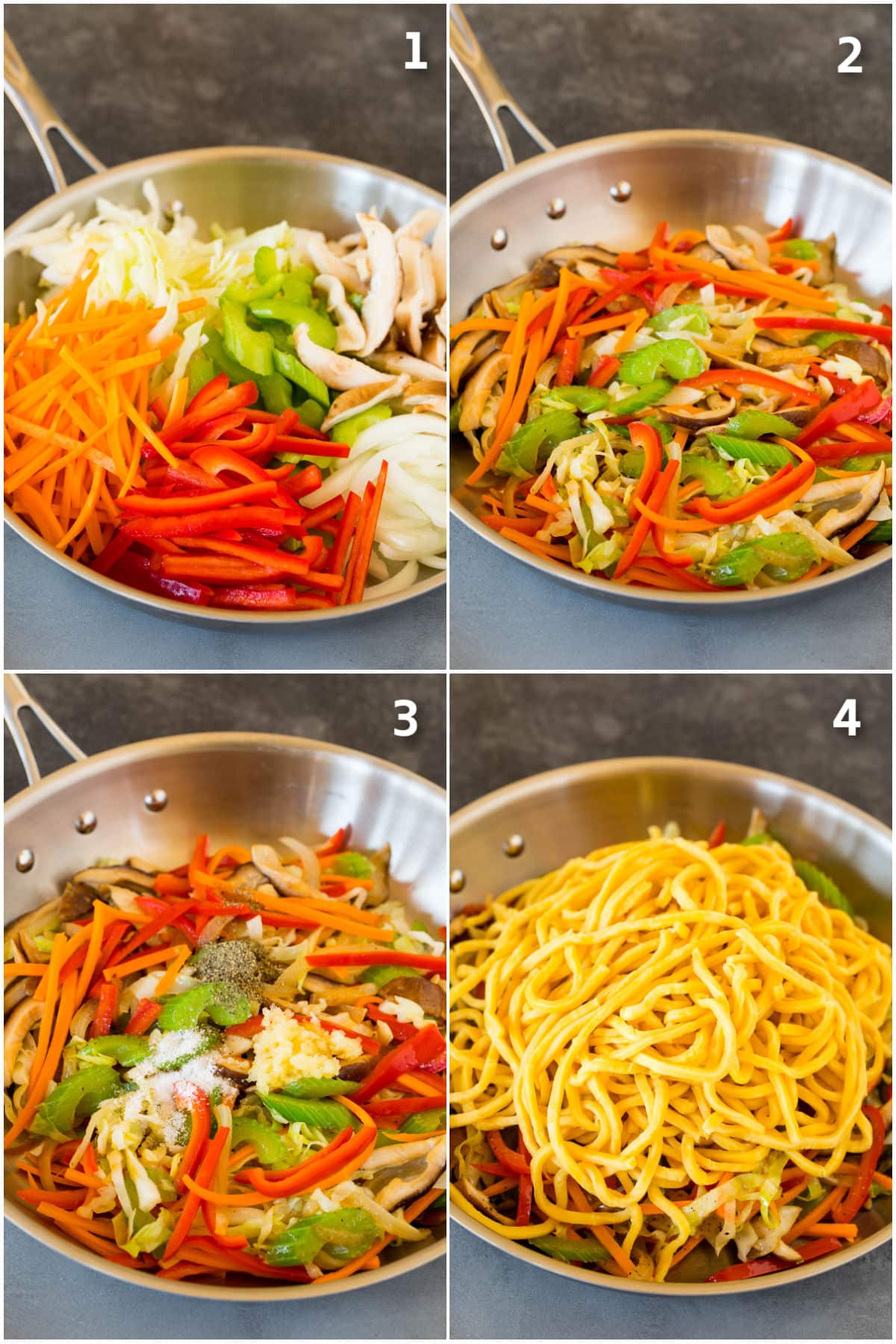
Tips For The Perfect Dish
- I use a mandoline to thinly slice my carrots, onions, celery and cabbage. This helps the vegetables to cook quicker, which means dinner is on the table in no time!
- Vegetable lo mein will stay fresh in the refrigerator for up to 4 days. Keep in mind that the noodles will continue to absorb the sauce as they sit in the fridge.
- Lo mein sauce contains hoisin sauce, which is a jarred sweet and savory Asian condiment. It is commonly available in the international foods aisle of most grocery stores.
- Can’t find Asian style noodles at your grocery store? Spaghetti will work in a pinch.
Quick Tip
I prefer to use shiitake mushrooms for this recipe for a more authentic flavor. If you can’t find them in your produce section, try white button mushrooms or cremini mushrooms.
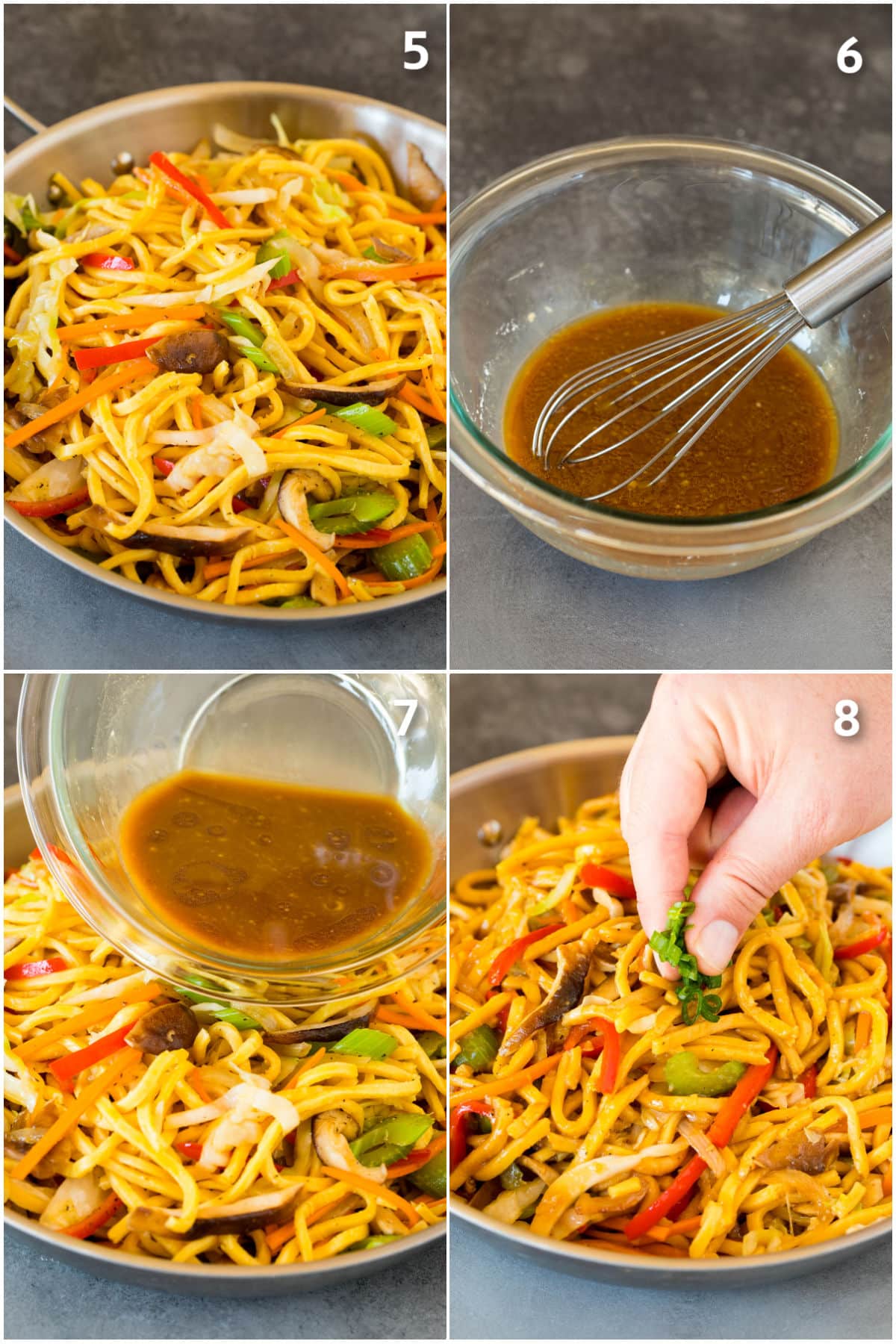
Recipe FAQs
Lo mein tends to use thicker noodles, and chow mein uses a thin noodle. Both dishes contain plenty of veggies, and seasonings such as garlic and soy sauce.
Lo mein is hearty enough to be served on its own as a main course. If you’re looking for a meal with multiple entrees or some appetizer options, you can serve your noodles with homemade egg rolls, crab rangoon, Asian cucumber salad or sesame chicken.
Lo mein translates to tossed noodles, which is the basis of this dish.
FOLLOW ME
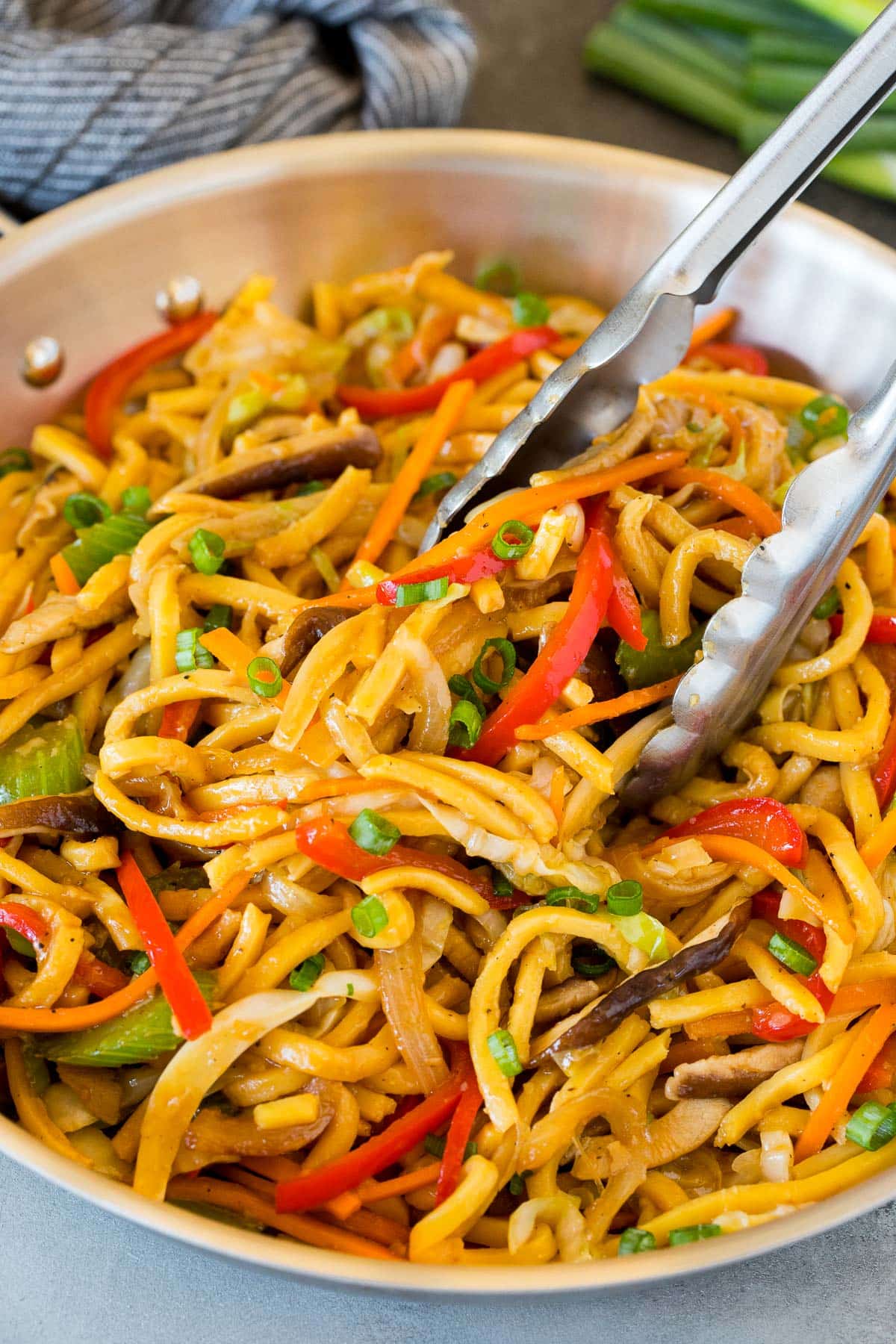
Flavor Variations
This dish is great as-is, but you can add other ingredients to make the flavors your own.
- Protein: Add some diced, sauteed tofu to your lo mein to turn it into a hearty main course offering. If you eat meat, you can also add chicken, shrimp or beef.
- Vegetables: The sky is the limit here! You can pretty much add any vegetables you want such as bean sprouts, snap peas, edamame, broccoli, water chestnuts, snow peas or bamboo shoots.
- Sauce: Add some freshly grated ginger to the sauce for extra zest. Love spicy food? Stir in sriracha, red pepper flakes or chili garlic sauce to taste. You can also add some sesame seeds to the sauce for more texture.
You’ll find yourself making this vegetable lo mein on a regular basis – it’s loaded with flavor, and a great way to get in all your veggies!
More Asian Inspired Recipes
Love This Recipe?
Please leave a 5-star 🌟🌟🌟🌟🌟 rating in the recipe card below & a review in the comments section further down the page.
Vegetable Lo Mein
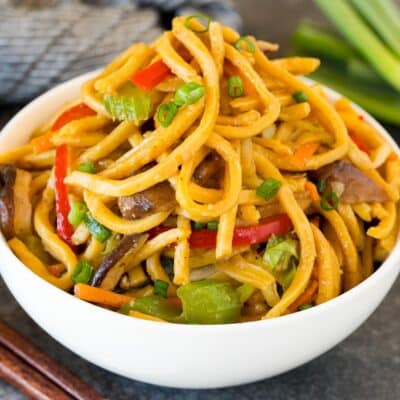
Ingredients
- 1 tablespoon vegetable oil
- 1/2 cup onion thinly sliced
- 1/2 cup carrots shredded or julienned
- 1/4 cup celery thinly sliced
- 1 cup green cabbage shredded
- 3/4 cup shiitake mushrooms stems removed, thinly sliced
- 1/2 cup red bell pepper thinly sliced
- 2 teaspoons minced garlic
- 10 ounces fresh noodles cooked according to package instructions
- 1/3 cup vegetable broth
- 2 tablespoons hoisin sauce
- 2 tablespoons soy sauce
- 1 tablespoon sesame oil
- 2 teaspoons corn starch
- 1/4 cup green onions sliced
- salt and pepper to taste
Instructions
- Heat the oil in a large pan over medium high heat.
- Add the onions, carrots, celery, cabbage, mushrooms and bell peppers to the pan and cook for 4 minutes or until just softened.
- Add the garlic and cook for 30 seconds. Season the vegetables with salt and pepper.
- Add the noodles to the pan, then toss to combine.
- In a separate bowl, whisk together the vegetable broth, hoisin sauce, soy sauce, sesame oil and corn starch.
- Pour the sauce into the pan and bring it to a simmer. Cook for 1 minute or until sauce is just thickened. Sprinkle with green onions, then serve.
Notes
- Vegetable lo mein will stay fresh in the refrigerator for up to 4 days. Keep in mind that the noodles will continue to absorb the sauce as they sit in the fridge.
- I find that fresh noodles work best, such as Asian style egg noodles. Many grocery stores sell Asian noodles in the refrigerated area of the produce section, or you can purchase them at an Asian market. The noodles I buy are labeled as Shanghai noodles. If you can’t find fresh noodles, dry noodles will also work well. Check your grocery store’s international foods aisle for dry noodle options.
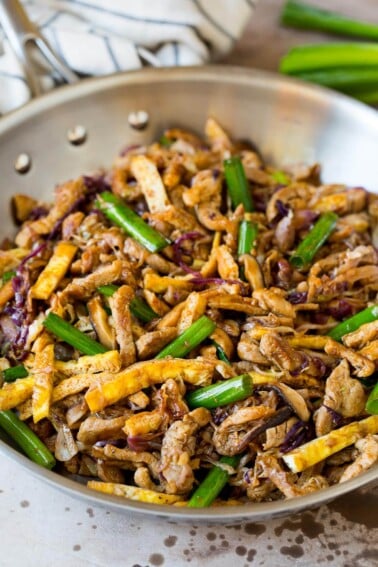
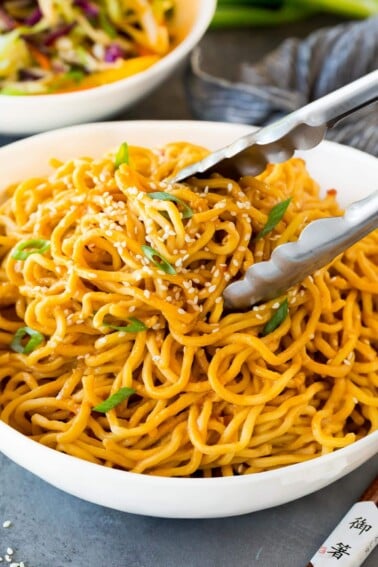

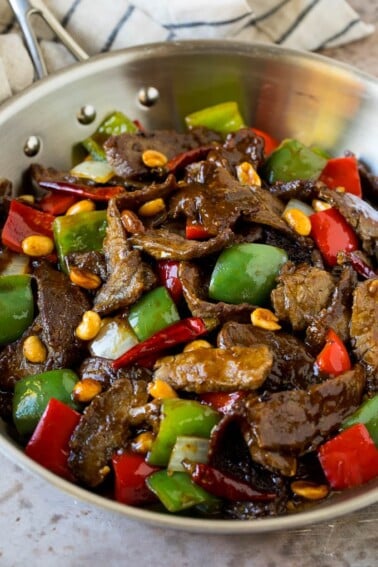


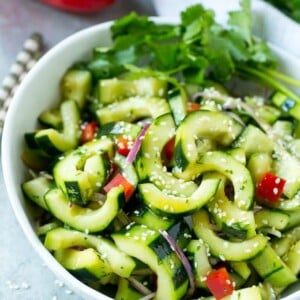




This Lo Mein recipe is sooooo delicious!!! I have made it 3 times this week; it is quick and easy to prepare and the recipe is interchangeable with whichever fresh vegetables I have on hand. My daughter even liked it and she doesn’t like much nor is fond of Chinese food.
Your Vegetable Lo Mein is absolutely splendid! The noodles were perfectly cooked, retaining just the right amount of bite, while the medley of fresh, crisp vegetables offered a delightful contrast. The sauce was a harmonious blend of savory and sweet, and it generously coated each strand of lo mein, enhancing the overall flavors. The recipe was straightforward and easy to follow, making the cooking experience enjoyable. This dish truly hits the spot for any lo mein lover – it’s authentic, scrumptious, and most importantly, homemade. Well done on this fantastic recipe!
Yummy! Who needs to head out to a restaurant when I can make this tasty vegetable lo mein at home. Made for such a nice dinner for my family!
This lo mein recipe is a delightful blend of flavors and textures. A healthy and satisfying noodle dish!
This was total comfort food. So easy to adapt too.
Seriously so yummy! We love making a meatless meal every week and this is our new favorite. Thank you!
5 Stars for Great recipes, photography, tasteful blog/even colors chosen for words “Dinner at the Zoo”. Wish I could leave 0 Stars for not replying to the beautiful people who take time from their busy day to leave valuable Feedback and compliments.
Hi Babby! I am a one woman team when it comes to answering comments, and I do get many comments every day. I respond to 100% of comments where someone is asking a question or has trouble with a recipe, but sometimes I don’t always get the chance to respond to compliments. I hope you enjoy this recipe!
I recently moved to an area where they make pretty awful Chinese takeout, so I’ve been learning how to make my favorite foods myself. Definitely adding this to my collection!
Loved this recipe. I was able to make it faster than ordering and picking up take out. So good!
This turned out so good and was very easy! The perfect way to satisfy my cravings for take out.
My kids loved this lo mein recipe. Incredibly tasty sauce!
Drooling over this lo mein. Looks so delicious. Thanks for the recipe.